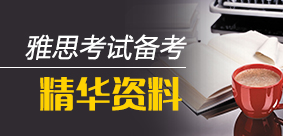摘要:今天要跟大家分享的雅思阅读素材题目是What Work Looks Like for Women in Their 50s?女人过50,工作是怎样?50岁?50岁都还没有退休呢吧?文章到底是要告诉我们什么,一起来看看吧!
一般认为,过了50岁,女性在职场就该走下坡路了。但是,新的时代,一切都可以重新设计!本文跟大家讨论关于女性职业的问题,文末有雅思词汇和句型,一起来看看吧!

“The fifties was the most exciting career decade of my life so far,” says Babette Pettersen, “and it looks like my options are only getting better as I turn 60.” Babette is one of a growing number of people — especially women — whose careers have accelerated(加速) as they have approached what used to be considered retirement age.
Pettersen spent her mid-career years with Dow Corning. This 22-year stretch, through her 30s and 40s, allowed her to “progress gently, step by step, while maintaining a reasonable work/life balance” while raising four children. The 50s saw a big change. First, she was head-hunted(猎头) to join Dutch DSM, a global science-based company, one of the few women on their executive team. A few years later, she joined a start-up called BioAmber, producing chemical intermediates using sugars instead of fossil fuels. It was a meaningful shift, allowing her to push for more sustainable(可持续的) alternatives to petrochemicals. “It’s almost as though I had lived my career back to front,” she laughs, “with all the change and start-up experience at the end rather than the beginning.”
But the “traditional” career path may just be a “traditionally male” career path. Most companies focus on thirty-somethings as high-potential talent to be developed and accelerated with job mobility and stretch assignments – acting as if careers are made (or not) before the age of 40. But this approach has never served women (or parents) particularly well. As lives stretch out towards the 100-year mark (see the upcoming book on The 100-year Life by Lynda Gratton and Andrew Scott), 50 may have to be redefined as simply a career mid-point.
Some companies are recognizing that a more gender-balanced talent pool requires a rethink of career phases, and are extending the age of talent identification from the 20s through the 40s.
At Unilever, Leena Nair, now Group HR, started a program earlier in her career in India called Career By Choice. It allowed employees – especially young parents — to become internal consultants for a time by offering flexible schedules. “Managing career cycles with flexibility and non-linear(非线性的) trajectories is important for us. It allows our employees to continue growing and developing while balancing personal priorities that become relevant at different life stages. We find the option of flexibility is particularly popular with women raising families, who then accelerate their career paths at a later stage.”
Odile de Damas-Nottin was appointed Senior VP HR of oil group Total’s Marketing & Services division at age 52 and promoted to the TOTAL Group’s Executive Team (32 people) at 54. She looks back on her career and acknowledges that this pattern was very much her own. First, there was a fast-tracked, highly varied learning curve on the commercial side of the business in her twenties. This was followed by an eight-year “plateau”(平原) in her thirties, running training for the French operation, when she had her three children. She remembers turning down an offer to go to the career-boosting internal leadership program just before having her third child. “It wouldn’t have been the right time,” she said, and acknowledges the extremely supportive managers she reported into at the time. They responded well when, a couple of years later, at age 38, she came back and asked to be sent on the exclusive program. This propelled(推动) her into a re-accelerated career phase. Now, at age 56, she is part of the top leadership team of one of the world’s big oil giants and is looking forward to continuing into broader leadership roles in the next, very challenging, decade of the Group’s future. Her appetite for leadership has only grown, and she looks with pleasure into her sixties at extending her experience to Boards of other companies as well.
For both women and men, it’s not just our professional life that peaks in our fifties. After the stress of the mid-life years, the data shows that happiness levels rise in the early 50s. New mental skills emerge. “Older people have fewer rows(争吵) and come up with better solutions to conflict,” noted the Economist in 2010, reviewing the research. “They are better at controlling their emotions, better at accepting misfortune and less prone to anger.”
Instead of feeling old and tired, fiftysomethings(50多岁的人) have figured out how to play the game, and can focus on influencing the outcome. While many still assume that careers are more or less over by the time you pass 50, the Boomer cohort is rewriting the rules. The combination of empty nests, established reputations, and paid-off real estate, means that the silver decades offer an unexpected cocktail of reduced costs, more flexibility, and – for some – exciting new career opportunities. This can all come as a delightful surprise. “Things get easier,” says Pettersen. “You have more time to think, more flexibility to move and more ambitions than ever before. I never expected this.”
文章来源于网络,如有侵权请联系我们,将会在第一时间处理
更多资讯可以关注微信公众号:IELTSIM。
[AD] 点击此处了解【雅思合集】【学习计划定制】【终生VIP服务】














